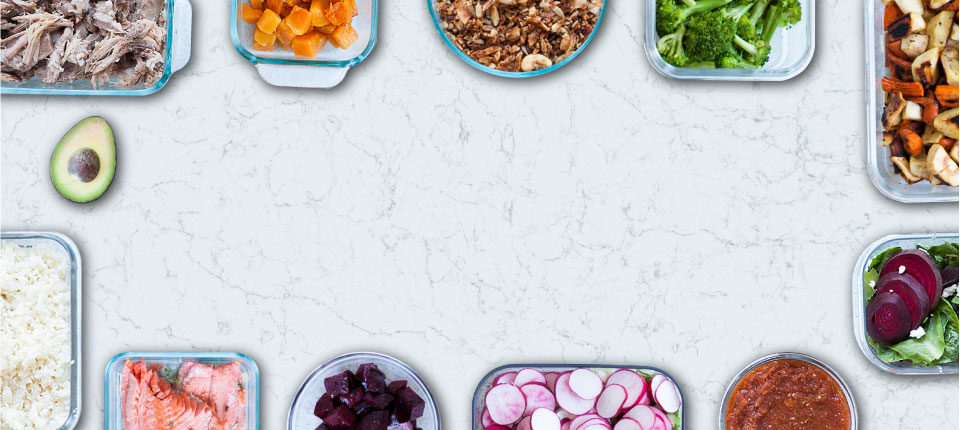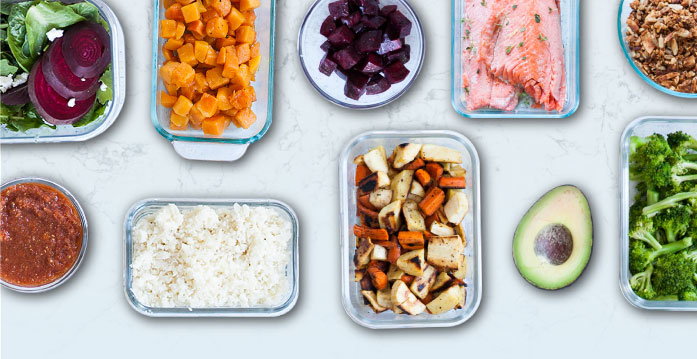If you lower dietary carbs so much that you go into ketosis, you may also experience keto flu symptoms.
Fatigue, brain fog, and even sore throat? No thanks.
Fortunately, there’s a way around that initial keto flu. And we’re here to tell you all about what to do when you have the keto flu. And how to avoid it in the first place.
What is the keto diet?
In a very small nutshell, the keto diet involves restricted carbs, moderate protein, and high amounts of fat. Get your carbs low enough and your body moves into ketosis, burning fat (instead of carbohydrates) for fuel.
People choose to eat keto for a variety of reasons, including fast and sustainable weight loss, leveling blood sugar levels, easing symptoms of neurological issues like epilepsy, and starving tumor cells.
To find out more about the best ketogenic foods to eat, What Are The Best Ketogenic Diet Foods To Eat? .
What are keto flu symptoms?
When you begin a keto diet, you may experience keto flu symptoms after a day or two. This can include:
- Fatigue
- Brain fog or confusion
- Dizziness
- Irritability
- Headaches
- Achy muscles
- Diarrhea or constipation
- Stomach discomfort
- Chills
- A sore throat
- Insomnia
- Sugar cravings
Keto flu symptoms can last for a day or up to an entire month.
How long these issues last depends on your eating habits beforehand, the flexibility of your body to use different sources of fuel, and how you carry out the keto diet.
Why does the keto flu happen?
All these ailments indicate carbohydrate withdrawal as your body uses up stored glucose and turns towards using fat as a primary source of energy.
Specifically, there are four main changes that make you feel sick.
Water and electrolytes – Lowering the number of carbohydrates in your diet reduces insulin levels, which in turns tells your kidneys to release sodium…via urine.
Any water retention in your body is flushed out. While this looks great on the scale and in the mirror, it can cause a drop of electrolytes in your body. On top of that, if you ate a fair amount of processed foods before going keto, your sodium intake will be much lower than before.
Loss of electrolytes can cause muscle cramping, dizziness, headaches, and digestive issues.
Body stress – Right before entering ketosis, as your body uses up the last bit of available glucose, stress signals peak and physiological alarm bells start ringing. Your body thinks it’s starving.
To combat the stress and to increase energy, it sends out a stress hormone called cortisol, which can make you feel irritable or disrupt your sleep.
Thyroid levels – Thyroid function is related to the carbohydrates you eat, so switching to a keto diet may cause your T3 levels to fall temporarily.
Thyroid hormones regulate metabolism, temperature, and heart rate. This temporary drop in T3 could cause you to feel chills, brain fog, and fatigue.
Gut microflora – When you change your eating habits, the microflora (all the bacteria, yeast, and viruses) in your gut have to adapt.
Bad microbes, from bacteria to yeast, can die off due to lack of food (simple sugars). While that is a good thing, as they die they can release toxins that make you feel crummy.
Also, you may be eating less fiber on a keto diet.
Not only does fiber keep things moving along inside, it is also a food source for probiotics, the good microbes. All this to say, that the population of little guys in your gut needs to adapt to your new eating habits. You may experience some gastrointestinal discomfort, as well as possible die-off symptoms.
8 tips to treat keto flu (or avoid it in the first place)
Hydrate up – Your body weight is composed of 60% water and every system in your body needs water to function.
Drinking enough fluids also helps flush out everything released into your system at this new dietary change.
How much should you drink? Half your weight in ounces – so if you weigh 160 lbs, drink 80 oz of water a day. Stir in a pinch of mineral salts, or even just regular salt, to help combat the loss of sodium.
Bone broth to the rescue – Not only does consuming bone broth count towards hydration, there are a number of health benefits as well.
Bone broth is not as high in minerals as sometimes touted (unless you simmer bones in vinegar broth for 12 days like the Chinese geung cho), but it is full of good stuff, like collagen, which helps heal the gut and even aids better sleep at night.
Supplement with electrolytes – Not only sodium but potassium and magnesium levels can drop during keto flu, especially if you sweat a lot due to climate or exercise.
Taking sodium, potassium and/or magnesium supplements can help even out the levels in your body. The easiest way for your body to use magnesium is through the skin; you can use magnesium sprays, oils, or lotions.
Mild exercise – Due to the stress on your body, as you adjust to the keto diet it is better to do mild rather than intense exercise.
Going for a walk (without your phone), dynamic stretching, or yoga can help lower stress and stress hormones like cortisol. These activities will also stretch out sore muscles and improve sleep.
Sleep tight – Sleep is vital for your body for so many reasons. Sleep is when the body regenerates, even helping shed weight. Getting a good night’s rest also lowers cortisol levels, but raised cortisol levels from added stress can make that harder.
Now is the time to engage in healthy sleep habits that will help you fall to sleep faster.
Eat fats – Eating lots of fat, and enough calories in general, will help your body make the switch to ketosis.
In particular, MCT oil can help keto flu symptoms because it goes straight to the liver after digestion for quick use. You can try fat bombs, like chocolate peppermint fat bombs or ginger fat bombs, the taste of which alone will help you feel better.
Get your greens – Make sure to get enough veggies in your diet to keep the digestive tract moving along, as well as fiber to feed those probiotics.
Pile your plate with above-ground produce like cruciferous vegetables, leafy greens, avocado, asparagus, and celery.
Consider carbs – If all else fails, you may need to temporarily raise your carbohydrate levels as your body eases into the new lifestyle.
You can do it in small ways, like eating low-sugar berries or non-starchy vegetables. Or, you may even need to ease into the keto diet over the course of a month if you have been eating a lot of processed foods until now. That way, your body has time to adjust to incrementally lower levels of carbohydrate intake instead of all at once.
If you’re looking for a way to count your macros as you transition into keto, the Real Plans macro tracker helps you tally up carbohydrates, protein, and fat – all within the comfort of your keto meal plan.


